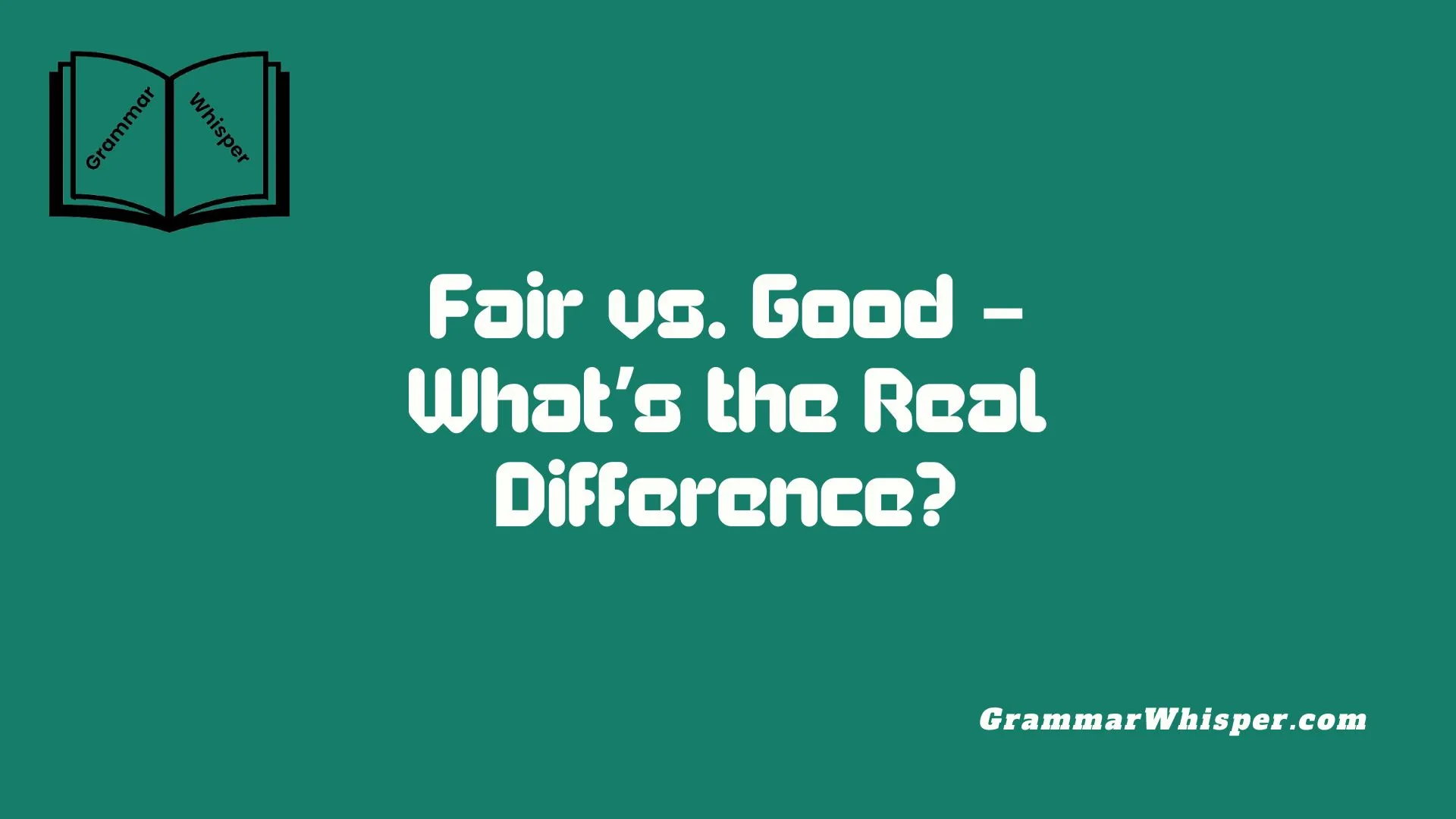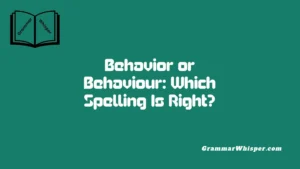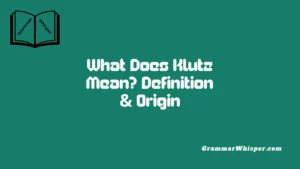When you’re describing a used car, your work performance, or applying for a loan application, words like Fair vs. Good aren’t just random labels. They carry serious implications. I remember once buying a used car marked as “fair.” My expectations were low – and rightfully so. The tires were worn, the engine ran, but the interior looked tired. If it had been listed as “good,” I would’ve expected a better condition, perhaps cleaner seats and smoother performance. That’s how a tiny difference in a rating changes big decisions. In real-world scenarios – from judging product conditions to reviewing credit scores or analyzing professional evaluations – one word makes all the difference.
Language plays a central role in how we communicate, especially when giving someone a word like “fair” or “good” during a performance review. Back when I worked in HR, I learned quickly that word choice was more than just semantics. It affected people’s motivation, future goals, and sometimes even their salary. Over years of writing employee reviews and detailed performance reports, I developed the skill to compare terms not just at face value, but through a cultural and psychological lens. Reading an in-depth guide or checking dictionary definitions helps, but what truly matters is the perception each term creates. The right word can bring clarity; the wrong one can confuse or discourage. So the next time you face a choice between “fair” and “good,” consider what it really says to the person hearing or reading it.
Understanding the Definitions of Fair and Good
Let’s start with the basics. What do fair and good actually mean?
Fair
- Definition: Moderately good; not bad, but not excellent.
- Oxford English Dictionary: “Of average or acceptable quality.”
- Merriam-Webster: “Marked by impartiality and honesty; free from self-interest.”
While “fair” sometimes refers to moral behavior (as in “a fair judge”), when used to assess quality, it usually means barely acceptable or adequate.
Good
- Definition: Of high quality; meeting expectations or requirements well.
- Oxford English Dictionary: “To be desired or approved of.”
- Merriam-Webster: “Of a favorable character or tendency; suitable or efficient.”
When we say something is good, we’re signaling that it’s more than just acceptable. It has positive qualities and is often satisfactory or even above average.
The Psychology Behind Perception: Why These Words Matter
Language shapes perception. The word you choose can alter how someone feels about an object, service, or person.
“Fair” Feels Cautious
- Suggests honesty, but not excitement.
- Carries a neutral-to-negative tone.
- May be seen as underwhelming or second-rate.
“Good” Feels Safe and Positive
- Implies satisfaction.
- Gives confidence to the buyer or evaluator.
- Has an inherently positive tone.
Cultural Differences
In some cultures, “fair” might be interpreted as generous or just. In others, it’s simply a step above poor. “Good,” on the other hand, tends to be universally viewed as favorable.
Where We See Fair and Good Used as Ratings
These words aren’t just abstract. They’re used in structured ways across ratings, systems, and scales. Let’s look at key areas where “fair” and “good” are applied.
Consumer Ratings
- Electronics: eBay often lists items as fair, good, very good, like new
- Books: Amazon sellers use fair for worn but readable books; good for lightly used ones
- Clothing Resale: Fair = minor damage or staining; Good = wearable with little wear
Condition Scales in Industries
- Car dealerships: Kelley Blue Book defines fair as cars that show considerable wear but are operable. Good cars are clean with minor wear and good mechanics.
- Furniture resale: Platforms like AptDeco and Chairish use these terms to rank the state of used items.
Table: Comparing “Fair” vs “Good” Across Product Categories
| Category | Fair Condition | Good Condition |
| Smartphones | Scratched screen, older battery, functional | Minimal wear, solid battery life |
| Cars | Cosmetic flaws, functional but aging parts | Light wear, regular maintenance |
| Books | Torn covers, annotations, readable | Clean pages, slight edge wear |
| Furniture | Obvious scratches, some wobble | Slight use, solid structure |
| Clothing | Stains, pilling, minor tears | Slight fade, no damage |
This chart shows just how different the experience of a “fair” vs. “good” item can be.
Credit Scores: Fair vs. Good in Finance
In the world of personal finance, these two terms carry very real implications.
FICO Credit Score Breakdown
| Credit Range | Category |
| 300 – 579 | Poor |
| 580 – 669 | Fair |
| 670 – 739 | Good |
| 740 – 799 | Very Good |
| 800 – 850 | Excellent |
A person with a fair credit score (e.g. 640) might pay significantly higher interest rates on loans than someone with a good score (e.g. 700).
Impact of Fair vs. Good Credit
- Fair Credit:
- Higher risk to lenders
- Higher down payments
- Limited access to premium credit cards
- Good Credit:
- More favorable loan terms
- Lower interest rates
- Easier rental approvals and insurance pricing
According to Experian, the average credit score in the U.S. as of 2024 is 714, which falls into the good category. That one label can mean the difference between approval and denial.
Online vs. In-Person Descriptions: Wording Matters
Online Listings
- More cautious and graded language
- Terms like “fair” signal transparency, especially when paired with photos
In-Store Labels
- Lean towards positive, persuasive language
- Rarely label things as “fair” unless heavily discounted
Examples
- eBay: “Fair condition – scratches on screen but works perfectly”
- Retail: “Gently used – good condition”
This shift in tone influences trust, sales, and returns.
Consumer Expectations and Trust
Words build or break trust. In one case study by Baymard Institute, over 60% of shoppers preferred listings with detailed condition descriptions. Vague terms like “fair” without details led to higher bounce rates and cart abandonment.
What Buyers Expect
- “Fair”: They expect damage or issues, and demand lower prices.
- “Good”: They expect functional quality, with minimal cosmetic flaws.
Psychological Anchoring
When given a choice, customers often select the middle tier. “Fair” becomes a low anchor, while “good” appears safe and reliable.
Fair vs. Good in Professional Evaluations
Employee Reviews
- “Fair performance” suggests someone is barely meeting expectations.
- “Good performance” means they are consistently delivering satisfactory results.
Medical Checkups
- “Fair health” = chronic conditions or manageable illness
- “Good health” = no active disease but may not be optimal
Insurance
- Property in “fair” condition may lead to higher premiums or claim denials.
- “Good” condition can qualify for discounts or lower deductibles.
Legal and Policy Language: When Words Become Standards
In legal documents, words are precisely chosen to avoid ambiguity.
- “Fair use” (copyright law): Allows limited use of copyrighted content under certain conditions
- “Good standing” (business or academic status): Refers to an individual or entity meeting all required obligations
- “Fair trial”: A legal right ensuring impartial treatment
Legal terms are often paired to reflect both ethical and practical dimensions.
When “Fair” Might Be the Better Word
Surprisingly, sometimes fair is more appropriate than good. Here’s when:
For Realistic Appraisal
- In art, antiques, or collectibles, calling something “good” can overstate its value. “Fair” is more accurate.
For Medical Diagnoses
- Telling someone they’re in “fair condition” after surgery helps manage expectations and encourage realistic recovery goals.
For Honest Feedback
- In performance reviews or peer assessments, “fair” signals there’s room for growth, which can motivate improvement.
Everyday Speech: Tone and Meaning in Action
Let’s examine how these terms come across in casual speech:
Example 1
“How was the hotel?” “Fair. It was clean but outdated.” (Not terrible, but certainly not a glowing review.)
Example 2
“How was the movie?” “It was good. Not amazing, but worth watching.” (A generally positive response.)
Tone, emphasis, and context shape how we hear these words. Saying “fair” in a flat tone may imply disappointment, while “good” with enthusiasm suggests satisfaction.
How to Use Each Term Correctly
Here’s how to decide which word fits your needs:
Use “Fair” When:
- You’re being honest about flaws
- You want to temper expectations
- There is adequate function, but limited appeal
Use “Good” When:
- The subject meets standard expectations
- You’re signaling approval
- There’s no serious downside
Avoid Overusing Either Word
Don’t fall into the trap of describing everything as either fair or good. Use clear, specific descriptors when possible:
- Instead of “fair phone”, say “phone with cracked back panel, fully working”
- Instead of “good essay”, say “well-structured essay with clear thesis”
Conclusion:
The gap between fair and good might not seem wide, but its impact is significant. These two words influence trust, value, and decision-making in areas like retail, finance, legal terms, and everyday conversation.
Understanding the difference helps you:
- Write clearer reviews
- Make smarter purchases
- Communicate expectations
- Avoid misunderstandings
So the next time you’re tempted to say something is “fair” or “good,” pause and ask: Is that really the most accurate word?
Because in language – and in life – the right word makes all the difference.
FAQs
What does “fair condition” really mean when buying used items?
Fair condition typically means the item is functional but has visible signs of wear or damage. It may have cosmetic flaws like scratches, dents, or stains, and may not include all original parts or packaging. It’s suitable for use but may require repairs or upgrades for optimal performance.
Is “good” the same as “like new”?
No, “good” is a step below “like new.” While good condition implies the item works well with minimal wear, like new means the item shows no noticeable use and is nearly indistinguishable from a brand-new version.
Can “fair” be a positive term in any context?
Yes. In some contexts, such as “fair trial” or “fair judgment,” the word means just, unbiased, or equitable – a positive attribute. It can also show honesty when evaluating a product or service by not overstating its quality.
Does a “fair” credit score mean I can still get a loan?
Yes, you can still get a loan with a fair credit score (usually 580–669), but you may face higher interest rates and more limited options. Improving your credit to the good range (670+) can offer better terms and lower costs.
Why do sellers prefer to use “good” instead of “fair”?
Because “good” creates a more positive impression, sellers use it to attract buyers and build trust. Using fair might be more honest in some cases, but it could lower interest or perceived value – especially in competitive markets like eBay, Facebook Marketplace, or used car listings.











